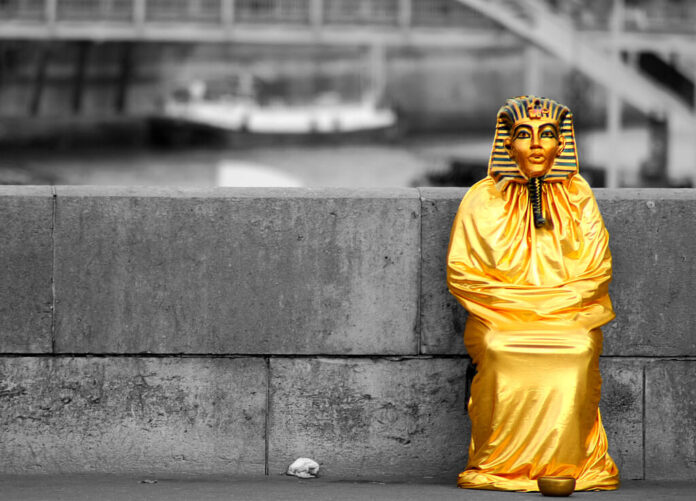
Howard Carter discovering the tomb of Tutankhamun in the Valley of the Kings in 1922 marked the beginning of a mania of the media the world of archaeology had probably never experienced before. The funder of the excavation, the Earl of Carnarvon, sold the exclusive access to the tomb to The Times for £5,000 and it did not take long for the world to fall victim to King Tut mania.
The government of Egypt, who is responsible for the administration of the found objects, generously shared them with the rest of the world. As of 1961, 30 artworks started to tour the world – due to financial problems. Floods threatened numerous archaeological sites on the Nile. The British Museum, for example, set a new record thanks to 1.6 million people that came to see these objects. Now the time has come again. Supposedly, for the last time ever.
Big Business with Tutankhamun
Tutankhamun, the king of pop archaeology, is on tour again. The Guardian believes that the term “pop archaeology” describes this exhibition very well, especially regarding the staging. The organisers even play matching pop songs in the background. The figures speak for themselves: 1.4 million people visited the exhibition in Paris, London’s Saatchi Gallery is expecting another record number of visitors. But aesthetics and culture aside: This is a tough business.
If you want to visit the exhibition with your family to show your child the 166 original items of Tutankhamun during the holidays, you have to be prepared to pay about 100 euros and queue for 30 minutes. Provided that you present yourself on time for the booked time slot.
The Egypt Independent leaked some figures obtained through a contact in the ministry of state for antiquities. Solely by having the pieces exhibited in London, Egypt makes 5 million pounds (6 million euros). Additionally, the revenues collected from the exhibition will be calculated by means of an incremental system: One pound will be collected for each ticket when the number of visitors exceeds 400,000, this sum will be doubled when the number of visitors exceeds 500,000. And it is very likely that these numbers will be reached within a few weeks. The exhibition opened in November and continues until May 2020. Furthermore, Egypt receives 10 percent of the total sales for the archaeological models purchased at the museum’s shop. But will the excavation sites in Egypt benefit from these revenues?

The Grand Egyptian Museum – Tutankhamun’s Last Tomb?
“Please see them,” said Mostafa Waziry, the secretary general of the Egyptian ministry of state for antiquities. “Visit them before they return to Egypt for ever.” Obviously, this isn’t meant to be understood as a threat…
Until now, the 5,000 items associated with Tutankhamun are touring at regular intervals. However, at the end of 2020 the gargantuan Grand Egyptian Museum will finally open its gates. There, they will find their final resting place, I mean their final exhibition site. At least that’s what the media says. However, the contact in the ministry mentioned that there are talks about continuing the tour until 2022. We don’t know if it will be true that none of the pieces will be ever on display again in other countries afterwards.
Cultural Property: A Business as Any Other?
Actually, it’s quite fitting to compare the exhibition to pop music. Think of the famous farewell tours followed by a revival tour and a final tour – after all, musicians need some kind of pension scheme as well. Cher has been on farewell tour(s) since 2002, Chris Rea since 2006. And Tutankhamun? Well, this will be a prosaic question of money, too. However, there is so much interest in him that tours with replicas already took place. In the future, the visitors of pop archaeology exhibitions will probably not be bothered by the fact that they are not looking at the original pieces as long as the staging is right. Cover bands can be successful, too.
The Egypt Independent published the figures behind the exhibition.
There, you can also read an interesting article on the financial aspect of Egyptomania.
If you want to visit the exhibition in London, you can purchase your tickets here.
The Guardian classified the exhibition as “pop archaeology” and “Hollywood”.
In this article, the Guardian announced the exhibition.
By the way, building the gargantuan Grand Egyptian Museum was a controversial issue; it required funds intended for other purposes like the protection of archaeological sites and the payment of wages of staff members of other running museums.



